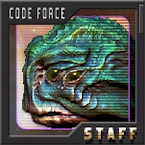elliotg
Posts: 3597
Joined: 9/10/2007
Status: offline

|
quote:
ORIGINAL: zgrssd
quote:
Without city night lights and terrain shadowing, planet textures just will not be usefull for custom planets. They would inherently look worse then their procedural counterparts. There is a reason you only use them for Asteroids.
I do forsee this becomming a critical issue for the modding community.
I think I should elaborate on this. I understand why you did it from a production perspective. But I also forsee 3 ways this could affect the modding community and thus the game:
1. The inability to make a remotely decent looking Solar System/Earth will turn away graphic modders. Which would negatively impact the longterm survival of the game.
Retexturing a colonizable planet without it looking like crap in the game. This should be around "Hello World" in difficulty. But I doubt it will even be possible in the game.
2. There will be a thread looking for "the closes approximation to earth".
Where people will exchange the inputs for the procedural generation that will closest represent earth. So they can have "almsot earths" in their galactic maps.
3. You give us at least some way to bodge the planet
- You can not give us a scaling heightmap (as those have to be procedurally generated), but what about a low detail heightmap of earth? Not a lot of the mountains throw shadows that can be seen from space. Even this image is only 254 KiB in size and has a lot of excessive detail. My instinct tells me we would only need 2 bits per pixel (Mountain visible from space, Land, Ocean, Deep Ocean). Any missing details could be interpolated from that.
- Maybe a static "city map" for populated planets, that is masked by the day/night cycle?
- Maybe a static cloud layer, that just rotates around the planet?
I hope I am wrong with Option 1. But I fear that you need to have 2 or 3 ready around release.
Not sure if you missed the part earlier in the thread where static planets have full access to all of the material features of Stride (the rendering engine). So not just diffuse, but normal maps, specularity, emissive, etc. So you can effectively do your own 'height map' using normal map, micro surface, etc.
See the Stride documentation for details: https://doc.stride3d.net/latest/en/manual/graphics/materials/material-attributes.html
Thanks
Elliot
|
 Printable Version
Printable Version







 New Messages
New Messages No New Messages
No New Messages Hot Topic w/ New Messages
Hot Topic w/ New Messages Hot Topic w/o New Messages
Hot Topic w/o New Messages Locked w/ New Messages
Locked w/ New Messages Locked w/o New Messages
Locked w/o New Messages Post New Thread
Post New Thread